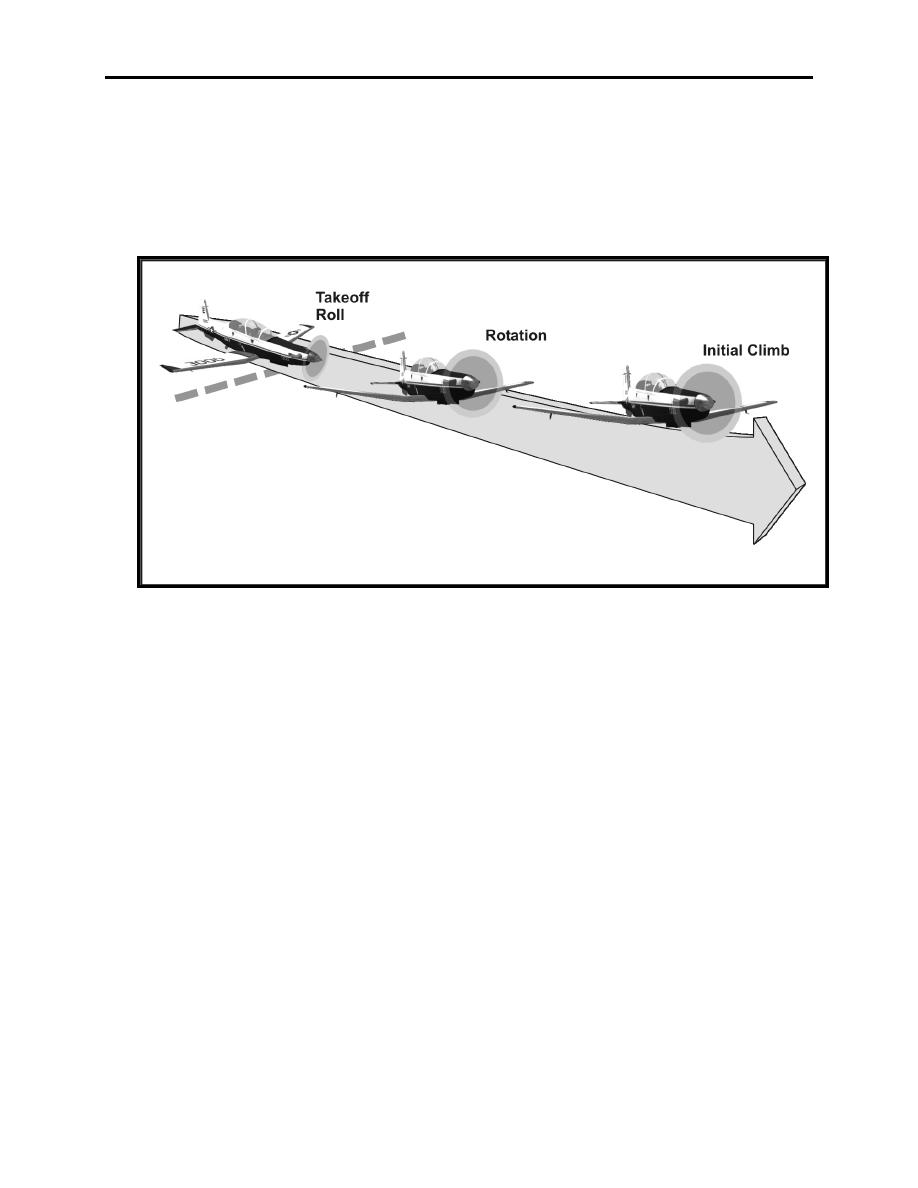 |
|||
|
|
|||
|
Page Title:
Figure 5-1 The Takeoff Roll, Rotation, and Initial Climb |
|
||
| ||||||||||
|
|  T-6A CONTACT
CHAPTER FIVE
gear. Secondly, a shorter distance is required to develop the minimum lift necessary for takeoff
and climb. Aircraft depend on airspeed to fly. A headwind provides some airspeed before the
aircraft even begins its takeoff ground roll as the wind flows over the wings.
Although the takeoff and climb process is one continuous maneuver, it is divided into three
separate steps for purposes of explanation: takeoff roll, rotation, and initial climb (Figure 5-1).
Figure 5-1 The Takeoff Roll, Rotation, and Initial Climb
The takeoff roll is the portion of the takeoff procedure during which the aircraft is accelerated
from standstill to an airspeed providing sufficient lift for it to become airborne.
The rotation is the act of raising the nose of the aircraft to a set pitch attitude, increasing AOA
and allowing the aircraft to become airborne in controlled flight.
The initial climb is the period just after the aircraft has left the runway and is normally
considered complete when the aircraft has reached a safe maneuvering altitude.
An abrupt application of power will cause the aircraft to yaw sharply left because of the torque
effects of the propeller. Steady the yawing tendency with right rudder as the engine spools up
and the aircraft begins rolling down the runway. Remember, the TAD will not begin making
rudder trim adjustments until 80 KIAS and weight off wheels. As speed increases, more and
more pressure will be felt on the flight controls, particularly the elevator and rudder. Since the
tail surfaces receive the full effect of the propeller slipstream, they become effective first.
Apply back elevator pressure at 85 KIAS to gradually raise the nose wheel off the runway and to
establish the takeoff attitude (8 nose high). This is referred to as "rotating." Allow the aircraft
to fly itself off the ground. Do not force the aircraft into the air with excessive back stick
pressure as this will only result in an excessively high pitch attitude, possible stall, and lengthens
FLIGHT PROCEDURES
5-3
|
|
Privacy Statement - Press Release - Copyright Information. - Contact Us |